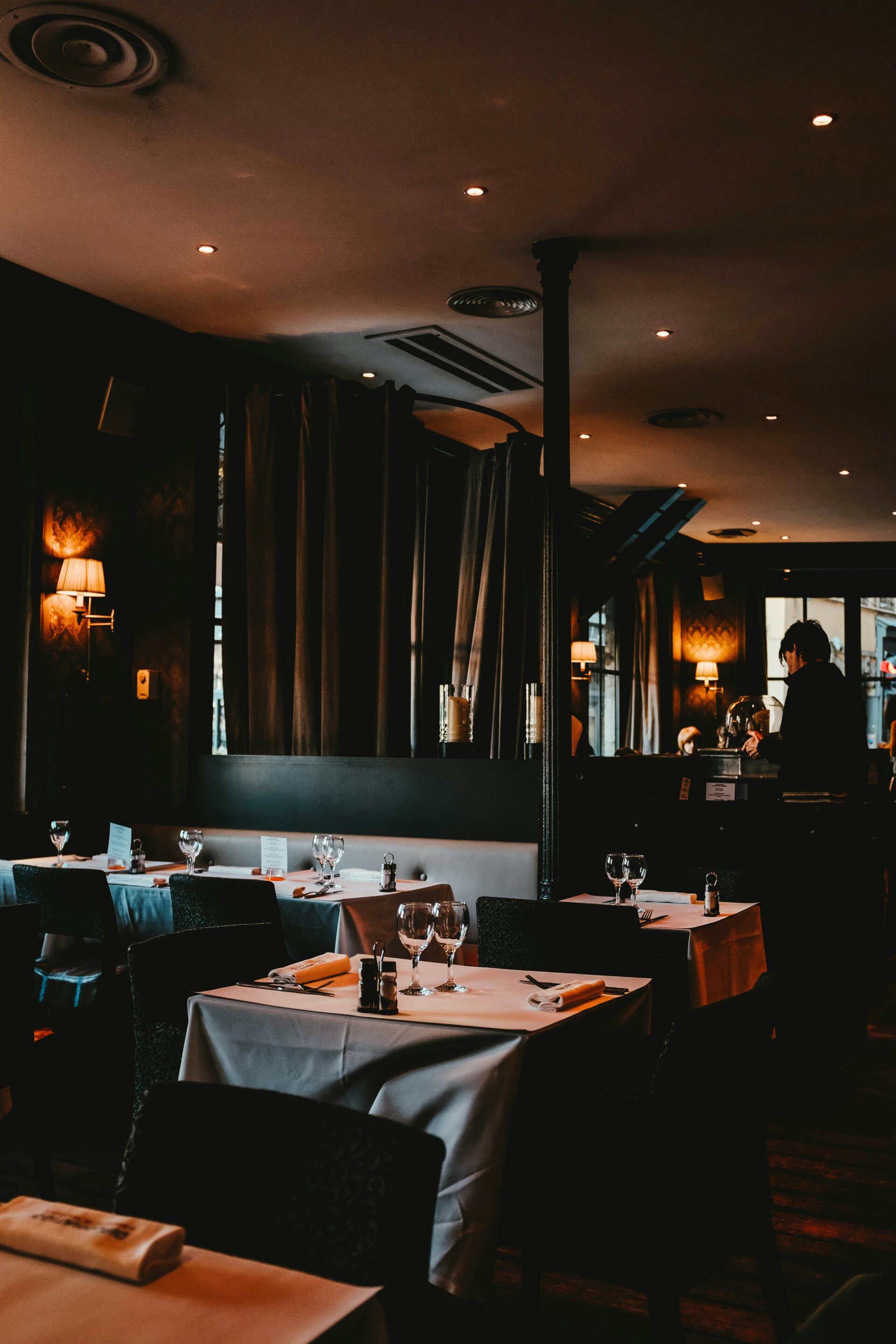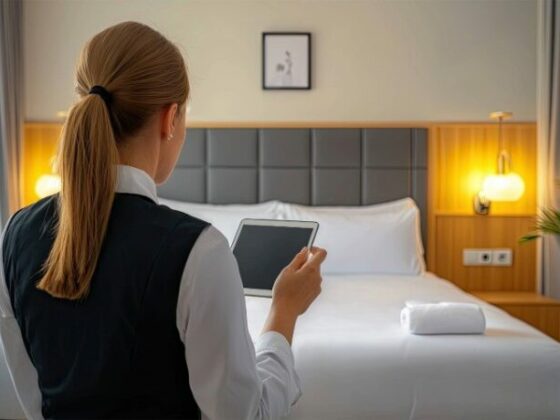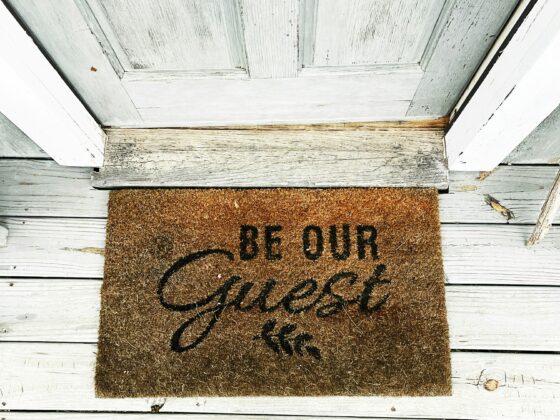When I stepped into my role as Executive Chef at Hilton Anaheim, it coincided with the largest renovation in the hotel’s 40-year history. But this wasn’t just a chance to update dining spaces or reimagine menus; it was a rare opportunity to fundamentally rethink how hotel food and beverage can engage today’s guests, drive revenue, and foster long-term loyalty.
In today’s hospitality landscape, food and beverage are crucial to a property’s success. Travelers expect more than convenience; they seek memorable, locally inspired, and value-driven dining experiences. At the same time, local communities instinctively shape the success of hotel restaurants. They are not interested in generic hotel fare; they crave quality, consistency, and creativity that rival -even surpass – their favorite neighborhood spots.
At Hilton Anaheim, our work goes beyond simply introducing new venues. Whether undertaking a major renovation or making incremental improvements, our approach is guided by the same principles: design with intention, listen to our audience, and use food and beverage as a powerful brand-building tool.
Rooted in Purpose and History
From my first day at Hilton Anaheim, the directive was clear. We were tasked with rebuilding Hilton Anaheim’s entire food and beverage identity from the ground up, shaping how people eat, drink, and experience hospitality throughout the hotel.
Hilton Anaheim is more than one of the largest hotels on the West Coast. It opened in 1984 to welcome the world for the Los Angeles Summer Olympics. That legacy of hosting global guests with warmth and pride set the tone for this transformation. As we looked forward, we were mindful to honor the past, a commitment to raising the bar not only for ourselves but for everyone who walks through our doors.
Listening became the foundation of this transformation. We engaged with guests, staff, and community members to truly understand what people want from hotel dining today, including what they are missing, what they expect, and how we could stand out in a competitive market saturated with options and rising expectations. The answer wasn’t chasing fleeting trends but building concepts that feel intentional, purposeful, and deeply rooted in the spirit of Southern California: bright, seasonal, accessible, and deeply satisfying.
What quickly became clear is that hotel dining cannot live in isolation from its community. Locals don’t just want a convenient option, they want a place that inspires loyalty and fosters connection. When they frequent a venue, they become advocates, spreading the word, and amplifying its reach far beyond the hotel’s walls.
Poppy’s: The Heart of the Culinary Overhaul
Poppy’s was the first concept we launched, and it quickly became the heart and hallmark of our food and beverage program. Developed by Hilton’s in-house brand incubator, StiR Creative Collective, the venue reimagines all-day dining through a vibrant, nourishing lens—capturing the bold flavors and sun-soaked spirit of Southern California.
Poppy’s is a convivial gathering place, designed to feel open, bright, and warm, just like the California landscape that inspired it. Natural wood tones, soft lighting, earthy textures, and subtle nods to native wildflowers create an inviting atmosphere that encourages guests to slow down and linger. Whether it’s a solo breakfast, a business lunch, or a celebratory dinner, Poppy’s adjusts seamlessly to each occasion.
The menu reflects the same philosophy – balancing nourishment and indulgence with dishes full of flavor, color, and care. We emphasize fresh, locally-sourced ingredients, and thoughtful preparation. But just as important as the food is our approach. Poppy’s was built to serve both travelers and locals equally.
An Ecosystem of Experiences
Once we laid the foundation with Poppy’s, the rest of the concepts naturally fell into place, each designed strategically to meet guests wherever they are in their day – without compromising quality or experience. From the largest Starbucks in a hotel, set to open later this summer, to our poolside dining and grab-and-go offerings, every element was thoughtfully developed to elevate the guest journey.
When integrated holistically into the flow of the property, each venue – no matter the size or service level – can contribute meaningfully to the guest experience. Consider the guest’s entire day, from morning coffee to late-night cocktails, and build offerings that support that rhythm.
Saltflower emerged as a relaxed, all-day poolside retreat, capturing the sunny, laid-back energy of Southern California. The menu features light, fresh bites like shrimp ceviche, grilled wraps, and hand-crafted frozen cocktails, perfect for lounging by the pool or catching up with friends.
This poolside venue is designed to add dimension to the guest experience – and that’s an important mindset shift. Outdoor spaces can be underutilized opportunities. Even modest pool decks or terraces can be activated with thoughtful service models, a simple cocktail menu, or light fare that resonates with the local climate and lifestyle.
Hansen’s Market, our grab-and-go concept, addresses the needs of busy travelers. Inspired by classic California roadside markets, Hansen’s offers fresh-baked pastries, artisan sandwiches, cold-pressed juices, and curated snacks. Quality and care go into everything, ensuring guests never have to sacrifice flavor or convenience. For operators, it’s a reminder that fast doesn’t have to mean formulaic. A well-executed grab-and-go program can generate revenue, reduce labor strain, and enhance the property’s F&B reputation if executed with the same attention to quality and brand alignment as your signature restaurant.
Our brand-new Starbucks reflects our commitment to delivering guest experiences that folks look forward to. Whether it’s grabbing a handcrafted espresso before a conference or enjoying an iced latte on the go, this addition is designed to meet guests where they are with familiar, high-quality offerings. For hotel leaders, strategic brand partnerships like this can be powerful tools to increase visibility, improve guest satisfaction, and tap into built-in customer loyalty – especially when aligned with the property’s overall experience.
Poppy’s Lounge anchors the redesigned lobby with a reimagined bar experience that has become a social hub. It’s a destination for craft cocktails, shareable plates, and connection. With a sleek design inspired by California nature and a rotating seasonal cocktail menu featuring drinks like the Bourbon Berry Jam and White Peach Paloma, it offers an elevated yet approachable evening atmosphere. A striking grand chandelier – custom-made in Los Angeles – adds a touch of sophisticated flair, while plush seating and natural textures echo the serene, nature-inspired aesthetic of the surrounding space.
Together, these venues form a complete ecosystem, meeting the needs of every type of guest at any time of day. Whether grabbing a quick bite or coffee to-go ahead of a day visiting the neighboring theme parks, snacking poolside, or lingering over dinner and cocktails, there’s an experience intentionally designed just for that moment.
For other hospitality professionals, our advice is this: design your food & beverage program with purpose. Even if you are not undergoing a major renovation, ask how each outlet can support the guest journey and reinforce your brand’s story. Whether that means rethinking your coffee offering, refreshing a pool menu, or adding local touches to the lobby bar, incremental improvements – when made with clarity and care – can transform how guests engage with your property.
The Role for the Modern Hotel Chef
The modern Executive Chef wears many hats. Beyond managing the kitchen, we are collaborators in design, branding, events, and the guest experience. At Hilton Anaheim, I work closely with architects, marketers, and service teams to ensure every food and beverage outlet tells a cohesive story.
Mentorship is another core responsibility. Hotel kitchens are often the first industry jobs for young cooks. It’s our job to train, not just for technical skills, but for culture. Teaching the “why” behind each dish, explaining sourcing decisions, and creating an environment where consistency and creativity are equally valued.
A strong mentorship culture improves retention, raises standards, and prepares the next generation of culinary leaders. Especially in high-volume properties, the right training systems make or break the guest experience.
A Foundation for the Future
This is the most ambitious culinary initiative Hilton Anaheim has ever undertaken, and I truly believe we are just getting started. With multiple outlets launched and more on the horizon, we are laying the groundwork for a hotel dining experience that competes not only with other hotels but with the best restaurants in the region.
The early signs are encouraging. Locals are discovering us, repeat guests are returning, and business travelers are spending time in the lobby simply to enjoy the food and drink offering. It’s incredibly validating – and motivates us to keep pushing forward.
While our transformation at Hilton Anaheim was extensive, many of the lessons learned are scalable to any property.
A few targeted strategies any hotel can implement include:
- Refreshing the breakfast menu with seasonal items or regional ingredients. Breakfast is often a guest’s first dining experience on the property. Incorporating local produce or seasonal specials adds a memorable, personalized touch to an often-overlooked meal.
- Treat Grab-and-Go as Brand Building. A thoughtfully designed grab-and-go outlet can improve your food cost, reduce staffing challenges, and leave a lasting impression if your items are focused on quality and packaging that reinforces your brand.
- Creating one signature dish or cocktail that becomes part of your hotel’s identity. A standout item not only generates buzz but also becomes a storytelling opportunity across menus, social media, and guest reviews. Signature offerings are essential for building brand recognition and repeat visits.
- Reconfiguring a lobby bar to improve flow and atmosphere. Think beyond the plate. Can you design your dining spaces as intentional touchpoints in the guests’ journey? Don’t overlook outdoor areas, lobbies, or transitional spaces. Even small terraces or courtyards can become revenue-generating venues with the right menu and service model.
Each of these changes, however small, signals thoughtfulness and improves guest perception. And when guests feel that care, they share it, return for it, and become loyal to it. In a competitive hospitality landscape, it’s not the grand gestures but the consistent, intentional touches that turn a visit into a story worth telling and sharing. Whether it’s a perfectly plated dish, a locally sourced ingredient, or a menu that reflects the soul of the destination, culinary experiences are often the heartbeat of hospitality – transforming impressions into lasting memories and loyal returns.
Reprinted from the Hotel Business Review with permission from www.HotelExecutive.com.

















